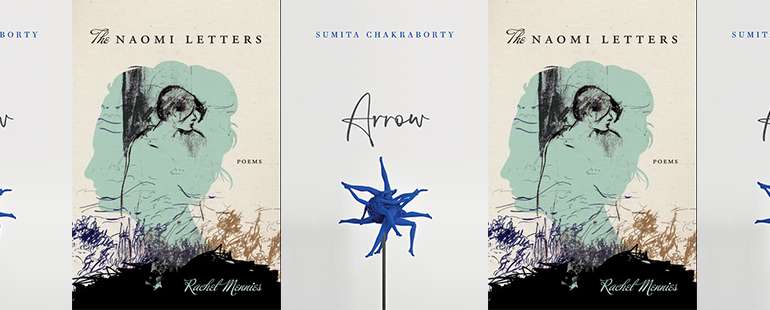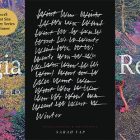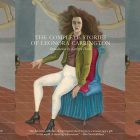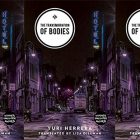The Reanimating Power of Epistolary Poetry

Almost a year after a young W.H. Auden left England for the United States, the poet began to work on his epistolary “New Year Letter,” timestamped in its epigraph: January 1, 1940. Addressed to Elizabeth Mayer, a close friend with whom he had just celebrated Christmas at her Long Island home, the three-part letter in verse accumulates a series of meditations on tradition and art, the immediate past, and the indeterminate future: “We meet, Elizabeth, and talk / Of friends who suffer in the torn / Old Europe where we both were born.” What became of Auden’s future in the U.S. is well-documented—his incomparable influence on mid- and latter-century American poets—yet this moment in this poem, as Auden reflects on their mutual emigration to the States, is animated into the future, timeless, experienced with every re-reading of his poem.
With his characteristic double-focus, both rationally moralizing and conservatively panicked, Auden writes in Part Two of “New Year Letter”: “Our best protection is that we / In fact live in eternity.” A single letter discloses an episode of intimacy, a searching knowingness, without further context: archived in the lives of a sender and a recipient as they cross each other on the page. Epistolary poems since Horace accomplish something slightly more uncanny: the archive of two or several lives exists in a specific past, yet these poems imagine a future into which their verse is designed to be re-experienced, their rhythms inflected in the voices of an invited participant.
Rachel Mennies’s The Naomi Letters, a new collection of epistolary poetry, out today, not only documents the ever-changing relationship between the recipient, Naomi, and the person drafting these letters, but also—more precisely—enacts how Naomi unwittingly organizes the sender’s sense of time. Each verse-letter is dated, beginning July 10, 2016, and spanning the subsequent year; the letters are then cataloged by season, chapters of their lives apart, communing together on the page and in the implied moment of Naomi opening the envelope. In “September 1, 2016,” the first summer of letters, Mennies confesses that this sequence of letters, and the promise that they might continue into some future moment, contours the image of what she later calls her “private self:”
My calendar counts time like this: days Naomi writes/days Naomi doesn’t write.
All my life, I have measured my days by the gestures of a beloved.
(I am the book resting where your hand last laid it down.
I am the patient dog framed by the open door.)
To become both active dog and passive book—to account for time as transfixing, never quite procedural—is an act of generous presence; Mennies writes later in the same poem, “But a body moves only forward, its course decided. / I float over my body and remember its arms reaching for you.” With lines that follow their sentence until final punctuation, another sentence to begin the next line, these poems enact such an immediacy, an engagement with the self as changed by language, that to end a line anywhere but the final predicate, it seems, might cause the living letter to erupt into panic or despair.
In this collection, composed of both delivered letters and undelivered drafts, the sender recounts stories from her life: conversations with therapists about medication and suicidal ideation, an account of her grandmother’s escape from Nazi Germany, observations about her own Judaism, and memories of earlier relationships and intimacies. While the recipient of these letters is Naomi, the woman the sender loves, we are the recipients of these poems, the readers for whom Mennies has organized this private exchange. Like Auden, Mennies accumulates a personal literary tradition, sharing that language with Naomi, situating these letters in a facilitation of poetry’s figurative powers: “Enough time left to read each other poetry: / Think of the storm roaming the sky uneasily— / this is Bishop, Naomi—”. Louise Glück and Petrarch, Sharon Olds, Yehuda Amichai, and Adrienne Rich: their lines are embedded in these moments, shared in the present. Yet The Naomi Letters does not lecture about how or why poetry will change our sense of language, our selves, through metaphor—instead Mennies’s epistolary poems dramatize, as they interpret and interact with borrowed language, that selfsame power of figurative thought.
The Naomi Letters is a record of one’s continued, lifelong reconciliation with their changing body, with the practice of faith situated in historical violence, with what increasingly looks like the volatility of the future. As a record, what language exists on the page represents a specific time in a specific person’s life: July 10, 2016, through June 15, 2017. To encounter these poems years later, years to come, means to experience the making of those poems into the future—in which readers observe and participate in their sequenced re-making. In an afterword of sorts, a final letter dated March 27, 2018, Mennies seals the exchange of verse letters by extending them to the public: “Here, the print—like our love—both begins and ends with a word, which means the word will remain in each shape’s body forever.” While these poems will indeed remain in the shape Mennies carefully designed, they will continue to be experienced as words on the page, sounds in our voices—and that process of making will be enacted again, upon each reading, with forever extending timestamps.
In Auden’s “New Year Letter,” after the poet remembers talking to Elizabeth about their “friends who suffer in the torn / Old Europe,” he reevaluates that very invocation: “What this refutes or that confirms, / I can but think our talk in terms / Of images that I have seen.” He confesses to his friend that “no matter where, or whom I meet” these images, these memories from Auden’s life in England, are superimposed onto everything, the present. Familiar objects, voices, and landscapes from the past shape the vatic sense of the future. Sumita Chakraborty’s debut collection, Arrow (2020), manifests the personal and immediate past, which contributes to something like a continued vision—not quite of what the future may look like, but of the conditional present. “When I picture Robert, he is in the Public Garden,” the book begins, and this emphasis on picturing, on recasting the memory of someone fixed in a determined time, no longer extending itself—in this case, Robert Lowell set against his Boston monuments—inflects that life into and through the poet’s language, structural rules and rule-breaking, and the formal sense of something happening.
For the many sequenced poems of Arrow, there are several interlocutors, particular versions of you who are asked questions, and in some cases, asked to speak back: a spirit, an apostrophe to the reader, questions the poet directs to herself. The poem “Basic Questions” begins with an impossible curiosity—a question from a voice presumed distinct from the speaking voice:
What was the experience of death like for you?
The fluids within my body failed to be held within my body, which, as far
as I can tell, does not entirely differ from some experiences of life.
The poem externalizes itself; it looks outwards as a means of conversing with memory. Likewise, the fifty-two section “Windows” is a panorama of visceral image-conjuring, an active attempt to observe for whatever time our senses allow: “vision watered / profusely a garden of images.” Chakraborty returns to this vision—she calls it elsewhere visio, a dream remembered as reality—as a measure of address, of reanimating figures as experienced in the poem’s own making and re-making as its read.
Nothing from Arrow marks itself as epistolary, at least not as explicitly as Auden’s “New Year Letter” or Mennies’s The Naomi Letters. The long elegy “Dear, beloved” is not an epistle—the title is made of names for the elegized: “Sister, I don’t listen to lovers, / either, who I call by the same names that were yours: / dear, beloved.” Yet to address those who exist in the past with such exacting vision seems to urge those figures into the present, making the poem, as if they may call out and answer, like a letter. “The girl would have been twenty-four. This was my visio. / Sometimes I think of it as prophecy. Other times, history.” To contend with ostensibly different sides of one moment—and in doing so, project the visio in those directions—does not render time shapeless, or a void for the meaning of one lifetime; instead, it twines the visio and the poem’s address intimately to its own making, its own process of being encountered on the page and in the minds of readers. To protract Auden’s “we in fact live in eternity,” this is a process of endless presence. To quote the poem: “Dears. Beloveds. / You’ve been asleep a long time, but we all return / to the waking world someday.”
Auden writes in his famous elegy for Yeats that poetry is “a way of happening.” Poetry itself is the process of happening, its reanimating force something experienced each time a poem is read in our heads, aloud, privately, or to others. The best poems—Mennies’s and Chakraborty’s poems—are made with such specificity, such unmistakable architecture, that hearing them is precisely this experience, this happening. As we actively engage with these poems, and as these poems conduct us through that engagement, their loved and beloved figures seem to almost, almost answer our questions.



